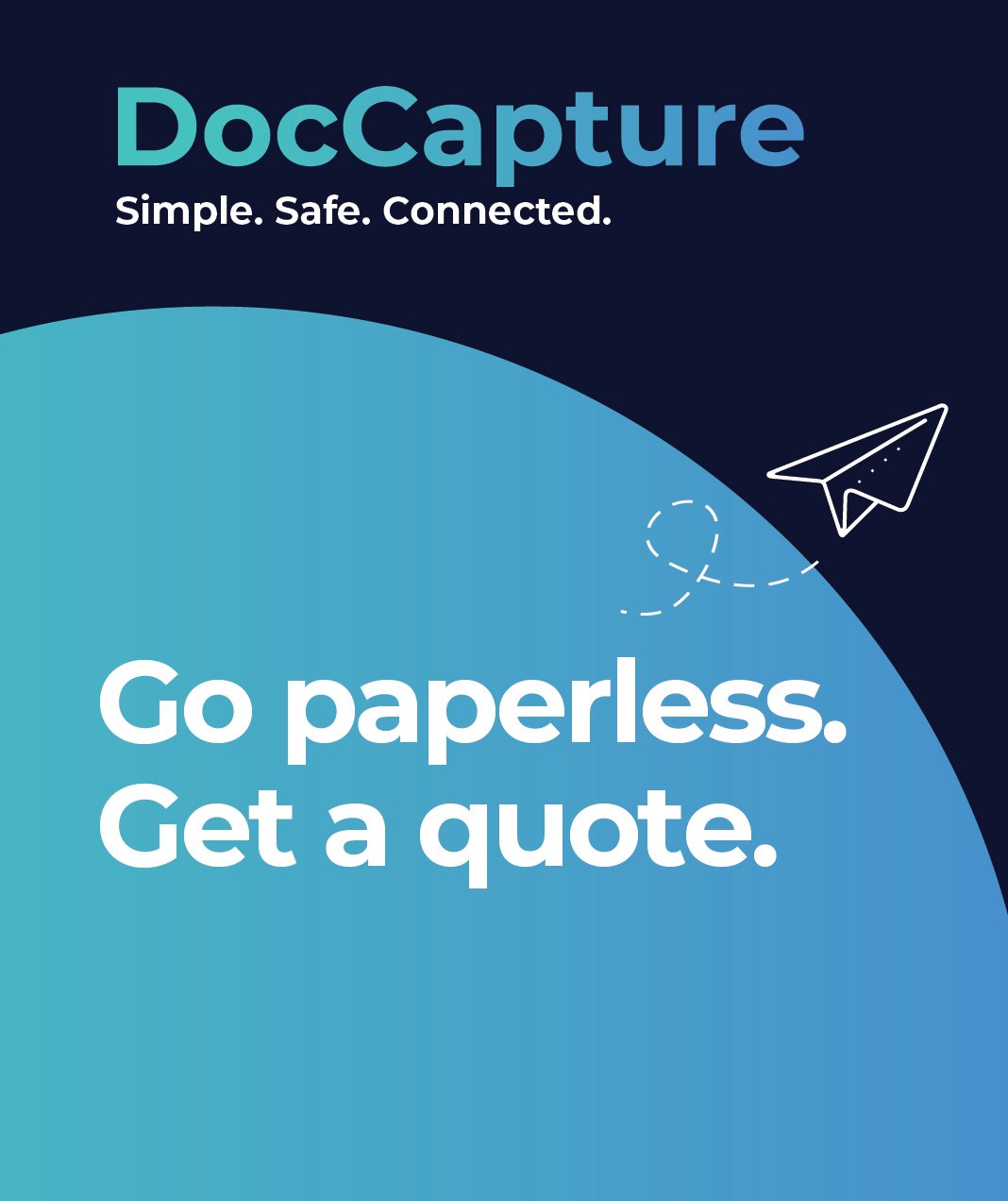The Evolution of Record Keeping in Education: From Paper to Digital
Table of contents
Educational institutions have long been the stewards of vital records, from student enrollment forms and academic transcripts to financial documents and staff records. Traditionally, these documents were housed in physical filing cabinets, requiring significant space, resources, and personnel to manage. However, in today’s digital era, the demand for efficient, secure, and compliant record-keeping has never been more critical.
School board decision-makers—whether they are CIOs, Records Management Officers, or Compliance Officers—face increasing pressure to modernize document management systems. The growing emphasis on data privacy, compliance with regulations such as FERPA and HIPAA, and the need for operational efficiency make the case for moving from paper-based to digital record-keeping stronger than ever.
In this article, we’ll explore the journey of educational institutions as they transition from traditional paper records to modern digital systems. We’ll examine the role of scanning technology, address common challenges, and highlight the benefits that digital transformation brings to K-12 school boards.
From Paper to Digital: A Historical Overview
For decades, educational institutions relied on paper-based systems to manage vast amounts of records. These systems, while familiar, were labor-intensive, prone to errors, and vulnerable to risks such as data breaches and natural disasters. Student files, transcripts, attendance records, and staff documentation were manually filed, retrieved, and archived—a process that often led to inefficiencies and increased administrative burden.
The 1980s and 1990s marked the early adoption of digital technologies in schools, with databases and rudimentary record-keeping software making tentative inroads. However, these systems were often standalone, requiring significant manual input and lacking comprehensive integration capabilities.
It wasn’t until the 2000s that more robust digital solutions began emerging, driven by regulatory requirements like FERPA, the need for enhanced data security, and the push for operational efficiency. Advances in scanning technology for schools and document management software allowed institutions to begin converting paper files into digital formats, setting the stage for the comprehensive digital ecosystems we see today.
This historical evolution highlights a pivotal transition: from reactive, paper-heavy processes to proactive, digitally-driven solutions that offer better security, compliance, and efficiency for K-12 educational institutions. For a deeper dive into this journey, check out Digital Transformation for School Boards and The Impact of Document Scanning on School Boards.
The Role of Scanning Technology
Scanning technology has been a catalyst in the digital transformation of K-12 educational institutions. By converting physical documents into digital files, scanning solutions have enabled school boards to streamline operations, enhance data security, and ensure compliance with regulatory standards like FERPA and HIPAA.
Document scanning offers a scalable, efficient method to digitize a vast array of records—including student transcripts, enrollment forms, disciplinary records, and staff documentation. This shift reduces the physical storage burden, minimizes the risk of lost or damaged records, and accelerates document retrieval. Additionally, scanned documents can be integrated with student information systems (SIS), learning management systems (LMS), and enterprise content management (ECM) platforms, creating a unified digital ecosystem.
Student records scanning is particularly impactful, supporting schools in managing records from enrollment through graduation while maintaining compliance and security. Scanning also facilitates disaster recovery, ensuring that critical data can be restored quickly in the event of a physical loss.
For school board leaders concerned about compliance, integration, and security, document scanning offers a proven, adaptable solution. By investing in robust scanning systems, schools not only modernize operations but also lay the groundwork for future-ready digital record-keeping.
Benefits of Digital Record-Keeping in Education
Transitioning from paper to digital records offers a multitude of benefits for educational institutions, particularly in areas of compliance, data security, operational efficiency, and cost savings.
Enhanced Compliance and Security
Digital record-keeping solutions provide robust mechanisms to comply with regulations such as FERPA and HIPAA. Role-based access controls, encryption, and audit trails ensure that only authorized personnel can access sensitive student information. With comprehensive student records scanning, schools can ensure compliance with data privacy mandates while reducing the risk of unauthorized access or data breaches.
Operational Efficiency and Cost Savings
Digitizing records significantly reduces administrative burdens. Staff can retrieve documents with a few clicks, eliminating time spent on manual searches through filing cabinets. Automated workflows can also streamline approval processes, reduce paper use, and free up valuable physical space. In the long run, schools save on printing, storage, and personnel costs, allowing budgets to be redirected toward educational priorities.
Disaster Recovery and Continuity
Digital records support robust disaster recovery plans. By securely backing up data in the cloud or off-site locations, schools can quickly restore access to critical documents in the event of a natural disaster or system failure. This resilience safeguards both student and institutional data.
Future-Ready Operations
A digital-first approach future-proofs educational institutions by enabling integration with other technologies, such as learning management systems (LMS) and advanced analytics platforms. By embracing digital transformation, schools position themselves to adapt to evolving educational and regulatory landscapes.
For further insights, consider reading Going Paperless: The Future of School Board Document Management and Best Practices for Scanning Student Records.
Overcoming Challenges and Objections
While the benefits of digital record-keeping are clear, school boards often face valid concerns when considering a shift from traditional systems. Addressing these challenges head-on is essential to a successful digital transformation.
Integration Issues
One of the primary concerns is how well digital systems, including scanning technology, integrate with existing infrastructure. Fortunately, modern solutions are designed with interoperability in mind. Document scanning platforms can seamlessly connect with student information systems (SIS), enterprise content management (ECM) systems, and learning management systems (LMS). This ensures a smooth transition, preserving data continuity and minimizing disruptions to daily operations.
Initial Investment
The upfront cost of digital transformation—hardware, software, and training—can seem daunting. However, the long-term savings in storage, labor, and operational efficiency often outweigh these initial expenses. Scanning technology also reduces the need for physical storage space, lowers the risk of costly compliance violations, and cuts down on document retrieval times, translating to real financial benefits over time.
Security Concerns
Data privacy and security are paramount, especially in education. Digital systems equipped with encryption, access controls, and audit capabilities offer stronger protection than paper-based methods. By partnering with trusted providers like DocCapture, school boards can ensure their digital solutions are compliant, secure, and resilient against cyber threats.
For more information on overcoming these challenges, explore Digital Transformation for School Boards and Future-Proofing Education: Digitizing School Board Operations.
Conclusion
The evolution of record-keeping in education has transformed from paper-based filing systems to robust digital ecosystems that enhance compliance, security, and efficiency. By leveraging advanced scanning technology, K-12 school boards can not only meet regulatory requirements but also future-proof their operations against emerging challenges.
As educational institutions continue to navigate increasing demands for data privacy, seamless integration, and cost efficiency, digital transformation is no longer optional—it’s essential. School leaders who embrace document scanning and digital record-keeping are better positioned to protect sensitive information, streamline operations, and allocate resources toward student-centered initiatives.
Now is the time to take the next step in modernizing your institution’s document management. Fill out our “get a quote” form to explore DocCapture’s tailored solutions for secure, compliant, and efficient document scanning designed specifically for school boards.
Share this
You May Also Like
These Related Stories

Ensuring Real-Time Data Access in Schools with Document Scanning

Addressing the Challenge of Data Security in Education

